 Dear readers, Catholic Online was de-platformed by Shopify for our pro-life beliefs. They shut down our Catholic Online, Catholic Online School, Prayer Candles, and Catholic Online Learning Resources essential faith tools serving over 1.4 million students and millions of families worldwide. Our founders, now in their 70's, just gave their entire life savings to protect this mission. But fewer than 2% of readers donate. If everyone gave just $5, the cost of a coffee, we could rebuild stronger and keep Catholic education free for all. Stand with us in faith. Thank you. Help Now >
Dear readers, Catholic Online was de-platformed by Shopify for our pro-life beliefs. They shut down our Catholic Online, Catholic Online School, Prayer Candles, and Catholic Online Learning Resources essential faith tools serving over 1.4 million students and millions of families worldwide. Our founders, now in their 70's, just gave their entire life savings to protect this mission. But fewer than 2% of readers donate. If everyone gave just $5, the cost of a coffee, we could rebuild stronger and keep Catholic education free for all. Stand with us in faith. Thank you. Help Now >
Apparitions and Appearances
FREE Catholic Classes
The term "appearance" has been used in different apparitions within a wide range of contexts and experiences. And its use has been different with respect to Marian apparitions and visions of Jesus Christ.
In some apparitions such as Our Lady of Lourdes or Our Lady of Fatima an actual vision is reported, fully resembling that of a person being present. In some of these reports the viewers (at times children) do not initially report that they saw the Virgin Mary, but that they saw "a Lady" (often but not always dressed in white) and had a conversation with her. In these cases the viewers report experiences that resemble the visual and verbal interaction with a person present at the site of the apparition. In most cases, there are no clear indications as to the auditory nature of the experience, i.e. whether the viewers heard the voices via airwaves or an "interior" or subjective sense of communication. Yet, the 1973 messages of Our Lady of Akita, which were approved at the Congregation for the Doctrine of the Faith in 1988 by Cardinal Joseph Ratzinger (later Pope Benedict XVI) are due to Sister Agnes Katsuko Sasagawa who had been totally deaf before 1973 (and remained deaf until 1982 when she was cured during Sunday Mass as foretold in her messages), suggesting means of communication other than airwaves.
In some apparitions just an image is reported, often with no verbal interaction, and no conversation. An example is the reported apparitions at Our Lady of Assiut in which many people reported a bright image atop a building, accompanied by photographs of the image. The photographs at times suggest the silhouette of a statue of the Virgin Mary but the images are usually subject to varying interpretations, and critics suggest that they may just be due to various visual effects of unknown origin. However, such image-like appearances are hardly ever reported for visions of Jesus and Mary. In most cases these involve some form of reported communication.
And apparitions should be distinguished from interior locutions in which no visual contact is claimed. In some cases of reported interior locutions such as those of Father Stefano Gobbi a large amount of text is produced, but no visual contact is claimed. Interior locutions usually do not include an auditory component, but consist of inner voices. Interior locutions are generally not classified as apparitions. Physical contact is hardly ever reported as part of Marian apparitions, unlike in cases of interaction with Jesus Christ. In rare cases a physical artifact is reported in apparitions. A well known example is the image of Our Lady of Guadalupe which is reported to have been miraculously imprinted on the cloak of Saint Juan Diego.
Catholic belief
According to the doctrine of the Catholic Church, the era of public revelation ended with the death of the last living Apostle. A Marian apparition, if deemed genuine by Church authority, is treated as private revelation that may emphasize some facet of the received public revelation for a specific purpose, but it can never add anything new to the deposit of faith. The Church will confirm an apparition as worthy of belief, but belief is never required by divine faith. The Holy See has officially confirmed the apparitions at Guadalupe, Saint-Etienne-le-Laus, Paris (Rue du Bac, Miraculous Medal), La Salette, Lourdes, Fatima, Portugal, Pontmain, Beauraing, and Banneux.
As a historical pattern, Vatican approval of apparitions seems to have followed general acceptance of a vision by well over a century in most cases. According to Father Salvatore M. Perrella of the Marianum Pontifical Institute in Rome, of the 295 reported apparitions studied by the Holy See through the centuries only 12 have been approved, the latest being the May 2008 approval of the 17th- and 18th-century apparitions of Our Lady of Laus.

Other apparitions continue to be approved at the local level, e.g. the December, 2010 local approval of the 19th-century apparitions of Our Lady of Good Help, the first recognized apparition in the United States.
An authentic apparition is believed not to be a subjective experience, but a real and objective intervention of divine power. The purpose of such apparitions is to recall and emphasize some aspect of the Christian message. The church states that cures and other miraculous events are not the purpose of Marian apparitions, but exist primarily to validate and draw attention to the message. Apparitions of Mary are held to be evidence of her continuing active presence in the life of the church, through which she "cares for the brethren of her son who still journey on earth".
Not all claims of visitations are dealt with favourably by the Roman Catholic Church. For example, claimed apparitions of Our Lady, under the title of "Our Lady of the Roses, Mary, Help of Mother's", Jesus Christ and various saints at Bayside, New York have not been condoned or sanctioned in any way, nor those at the Necedah Shrine in Necedah, Wisconsin. The behavior of Ms Veronica Lueken and Mary Ann Van Hoof, who claimed these heavenly favors, was deemed not to compare favorably with the "quiet pragmatism" of St. Bernadette Soubirous - Church authorities are said to use Bernadette as a model by which to judge all who purport to have visitations. Indeed, both women seriously criticized the Roman Catholic Church hierarchy, allegedly even harshly, and Mrs. Van Hoof is said to have subsequently left Roman Catholicism for an independent local Old Catholic Church.
Possibly the best-known apparition sites are Lourdes and Fatima Over sixty spontaneous healings, out of thousands reported at the Lourdes Spring, have been classified as "inexplicable" by the physicians of the Lourdes Bureau, a medical centre set up by the Church in association with local medical institutes to assess possible miracles. The Three Secrets of Fatima received a great deal of attention in the Catholic and secular press.
Apparitions and statues
Marian apparitions are sometimes reported along with weeping statuesof the Virgin Mary. However, to date only one single example of acombined weeping statue and apparition (namely Our Lady of Akita) has been approved by the Vatican and the rest have usually been dismissed as hoaxes.
Discerning Apparitions and Private Revelation
An Apparition is an appearance. In that sense, there have been reports of apparitions since the earliest history of the Church. I have always found St. Matthews account of the crucifixion to be one of the most fascinating. After the Lord Jesus surrenders Himself in Love for our redemption we read this account:
â₏Ĺ"But Jesus cried out again in a loud voice, and gave up his spirit. And behold, the veil of the sanctuary was torn in two from top to bottom. The earth quaked, rocks were split, tombs were opened, and the bodies of many saints who had fallen asleep were raised. And coming forth from their tombs after his resurrection, they entered the holy city and appeared to many. The centurion and the men with him who were keeping watch over Jesus feared greatly when they saw the earthquake and all that was happening, and they said, â₏Ĺ"Truly, this was the Son of God!â₏â₏ (Matt. 27: 50 -54)

"Our Sunday Visitor's Catholic Encyclopedia," gives us some helpful distinctions concerning the language used when discussing purported heavenly appearances, private revelations and the messages associated with them. Here is a summary:
Apparition: The name given to various kinds of supernatural visions of heavenly beings and is frequently applied to the visions associated with Mary.
Private revelation: This comes from a vision and communication from Mary or other heavenly beings. "Revelation" is the body of truths found in the Scriptures and Sacred Tradition of the Church. "Private revelations" are not dogmas of faith and are open for selective acceptance and devotion of the faithful.
Messages: Often in an apparition, a message is given to the seer (the person who beholds the vision). It may be a warning about the need for prayer and penance to avert a coming war or disaster. After apparitions at Fatima, Portugal, Our Lady of Fatima told Sister Lucia de Santos that a pope would be shot. This prophecy was verified on May 13, 1981, when Pope John Paul II was shot in Rome.
Messages may also include a request that a church be built to honor Mary at the apparition site with the promise of blessing to all who come to pray there. For example, the basilicas in Lourdes, France, and Guadalupe, Mexico, were built in response to Mary's request and are visited by millions of pilgrims annually.
How Do we Discern Apparitions and Private Revelations?
The Catechism of the Catholic Church sets the standard by which the faithful should approach any claimed Apparition, private revelation or message associated with them:
"The Christian economy, therefore, since it is the new and definitive Covenant, will never pass away; and no new public revelation is to be expected before the glorious manifestation of our Lord Jesus Christ." Yet even if Revelation is already complete, it has not been made completely explicit; it remains for Christian faith gradually to grasp its full significance over the course of the centuries.
â₏Ĺ"Throughout the ages, there have been so-called "private" revelations, some of which have been recognized by the authority of the Church. They do not belong, however, to the deposit of faith. It is not their role to improve or complete Christ's definitive Revelation, but to help live more fully by it in a certain period of history. Guided by the Magisterium of the Church, the sensus fidelium knows how to discern and welcome in these revelations whatever constitutes an authentic call of Christ or his saints to the Church.
â₏Ĺ"Christian faith cannot accept "revelations" that claim to surpass or correct the Revelation of which Christ is the fulfillment, as is the case in certain non-Christian religions and also in certain recent sects which base themselves on such "revelations." (CCC #65-67)
Norms and Process for Judging Private Revelations
The following material is from the University of Dayton in Ohio which houses the International Marian Institute and the largest Marian library in the world. They have done a thorough job in offering assistance to the faithful on whether Apparitions are reliable and how we can approach them with the mind of the Church:
Realism
During the past several years, the number of reported apparitions has been greatly increasing. While concentrating on Marian apparitions, our purpose here is to view all popular piety in the context of the total picture of Catholic faith, devotion, and discipleship. Our approach is to strike a happy medium between vain credulity and sterile skepticism. Perhaps we could label our position as one of critical or moderate realism.
Authentic Visions
Visionaries or seers behold an object not naturally visible to other persons. An authentic supernatural vision or apparition is different from illusions or hallucinations that result from pathological conditions or even diabolical intervention. An authentic vision is a charism -- gratia gratis data -- given to an individual or group for the spiritual good of others and/or for the Church as a whole.
The Church's Voice
On February 25, 1978, the Sacred Congregation for the Doctrine of the Faith (CDF) issued "Norms of the Congregation for Proceeding in Judging Alleged Apparitions and Revelations." Pope Paul VI had approved these norms the preceding day.
Although this document uses the term supernaturalitas, we believe that what is meant is something supernatural in the mode in which it has occurred rather than supernatural in its essence or substance.
The Bishop's Role
When an allegedly supernatural event has occurred, it is the responsibility of the local bishop to conduct an investigation, usually through a committee of experts.
Theologically and canonically, the bishop is entrusted with the role of "oversight" of the diocese. This role of "oversight" is based on the bishop's responsibility both for public worship and for the religious teaching which occurs in the diocese.
Norms for Discernment
1) The first norm for evaluating miraculous events is that there be moral certainty, or at least great probability, that something miraculous has occurred. The commission may interview the visionaries, call other witnesses, visit the site of the events.
2) The second norm deals with the personal qualities of the subjects who claim to have had the apparition; they must be mentally sound, honest, sincere, of upright conduct, obedient to ecclesiastical authorities, able to return to the normal practices of the faith (such as participation in communal worship, reception of the sacraments).
3) A third category deals with the content of the revelation or message: it must be theologically acceptable and morally sound and free of error.
4) The fourth positive criterion is that the apparition must result in positive spiritual assets which endure (prayer, conversion, increase of charity).
These four criteria may also be restated in a negative way. There must be no doubt that what is occurring is truly exceptional and beyond human explanation. There must be no doctrinal error attributed to God or to the Blessed Virgin Mary or some other saint. The third negative criterion is that there must be no hint of financial advantage to anyone connected with the apparitions, nor must any of the visionaries be accused of serious moral improprieties at the time when the visions were being received, nor may there be evidence of mental illness or psychopathic tendencies.
Verdicts
At the end of the investigative process, the committee may submit to the bishop(s) one of the following verdicts or conjectural judgements: constat de supernaturalitate (the event shows all the signs of being an authentic or a truly miraculous intervention from heaven); constat de non supernaturalitate (the alleged apparition is clearly not miraculous or there are not sufficient signs manifesting it to be so); non constat de supernaturalitate (it is not evident whether or not the alleged apparition is authentic).
The Bishop's decision regarding alleged apparitions usually does not attempt to interpret or give the spiritual significance of the events, nor to interpret the messages or identify the heavenly persons who may have appeared.
Public Worship
All such investigations are conducted by the bishop to determine whether public worship should continue to be held in those places. It could happen that the investigative committee could conclude that at this time it is able neither to make a clearly positive nor a clearly negative judgment. If the matter is still being investigated, the bishop could permit public worship, while at the same time continuing to be vigilant that the devotions do not wander into deviant directions.
Our Responsibility
As the bishops are entrusted with these responsibilities stemming from the nature of their office, so there are fundamental responsibilities on the part of the members of the diocese. First, they are to obey their bishops when the latter act as Christ's representatives (canon 212), that is, when they teach formally or establish binding discipline as pastors of a particular church. This obedience owed to the bishops in their capacity as leaders of particular churches is intended to promote the common good. Canon 753 also speaks of the "religious assent" owed to the bishops' teaching authority, which means a special quality of respect and gratitude, along with critical awareness and good will. Hence, there should be intelligent obedience to ecclesiastical authority in the matter of alleged apparitions.
Publications
A new era opened in the canonical regulations dealing with apparitions occurred in 1969. In that year, Pope Paul VI deleted certain canons of the Code of Canon Law (1917). These canons had specifically forbidden the publication of all books or pamphlets about new apparitions, revelations, visions, prophecies, and miracles, or which introduce new devotions, even though justified as private. Such prohibitions are not part of the Code of Canon Law (1983). So the many reports of Marian apparitions may in part be due to the new freedom to discuss freely and to report such occurrences to the media, without first submitting them to ecclesiastical approbation.
The Foundations of Our Faith
Our faith cannot rest on private revelations and apparitions. Even with properly approved apparitions, we must maintain a proper perspective -- viewing them as an assistance to nourish our faith in the central dogmas of the Incarnation, the Trinity and the Eucharist. In their 1973 pastoral letter, Behold Your Mother: Woman of Faith, the American bishops called authenticated appearances of Mary "providential happenings [which] serve as reminders of basic Christian themes: such as prayer, penance, and the necessity of the sacraments." (# 100).
This text is based on "Discerning the Miraculous: Norms for Judging Apparitions and Private Revelations" by Frederick Jelly, O.P. (1993); and "Canonical Considerations regarding Alleged Apparitions" by Fr. Michael Smith Foster, JCD (1995). It was abridged, combined and rearranged by Fr. Johann G. Roten, S.M.
More Mary, Mother of God
Appearances of Mary
Apparitions and Appearances
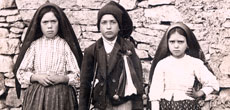
The term "appearance" has been used with Marian apparitions and visions of Jesus Christ. The Church will confirm an apparition as worthy of belief, but belief is never required by divine faith. Read More
Evaluating Apparitions
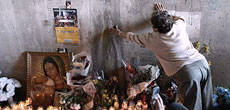
A Roman Catholic approved Marian apparition is one that has been examined by the Congregation for the Doctrine of the Faith and has been granted approval by the local Bishop or the Holy See. Read More
Approved Appearances
Vatican
Bishop
Coptic
Un-Approved Appearances
Unapproved Apparitions
Mary as Mother
Mother of God (TheotoKos)

From antiquity, Mary has been called "Theotokos", or "God-Bearer". The word in Greek is "Theotokos". The term was used as part of the popular piety of the early first millennium church. Read More
Daughter of the Father
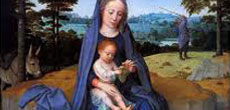
Mary is "full of grace," because it is precisely in her that the Incarnation of the Word, the hypostatic union of the Son of God with human nature, is accomplished and fulfilled. Read More
Mother of the Redeemer
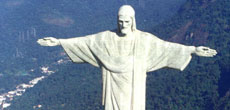
Mary was there at the Incarnation, Birth, Crucifixion, and Resurrection of God Incarnate. She was there throughout the often called "hidden years" in Nazareth. In the life of the Redeemer... Read More
Spouse of the Spirit
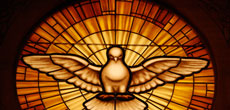
Throughout God's relationship with Israel He promises to espouse His people to himself (See, e.g. Hosea 2:19). This language of spousal love, of nuptiality, is also present in this overshadowing... Read More
Mother of the Church
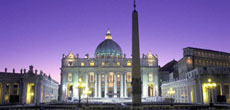
Since the Virgin Mary's role in the mystery of Christ and the Spirit has been treated, it is fitting now to consider her place in the mystery of the Church. She is acknowledged as... Read More
Mother of the Domestic Church
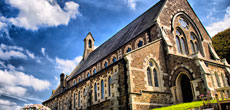
Mary is the mother of every domestic church, of every Christian family. She fully understands the naturally supernatural realities of family life because she lived them. Read More
Our Mother
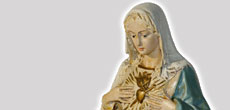
I found that every one of the great influences in my Christian life from that communion of saints to which we are all joined was profoundly "Marian". Francis of Assissi, Bernard of Clairvaux... Read More
Mary as Model
Mary in the Scriptures
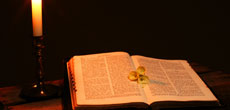
Christian Scripture calls the "more excellent way", the way of Love. Mary understands this Way and walked on it with extraordinary humility. Follow her in journey through the Scriptures. Read More
Mary in the Tradition
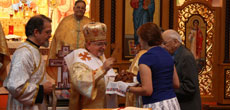
To understand Mary in the Tradition of the Church we have to understand what is meant by the word "Tradition" - and why it matters. In his second letter to the Thessalonians the Apostle Paul... Read More
Mary and the Councils
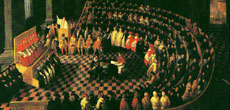
A Bishop named Nestorius objected to the title of Theotokos, Mother of God or God Bearer for Mary. The Council of Ephesus met in 431AD and affirmed Mary was the "Mother of God"... Read More
Mary in the Liturgical Year
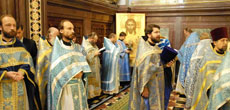
The Second Vatican Council did not offer one particular document on Mary, the Mother of God. Rather, the Council fathers incorporated the meaning and mission of Mary, as well as her... Read More
Mary East and West
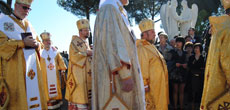
Devotion to - and love for . Mary, the Mother of God, is a foundational part of the Christian Church both East and West. The Eastern Christian emphasis, both doctrinally and devotionally, is... Read More
Mary and the Early Fathers
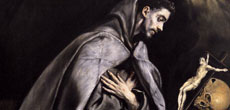
Among the multiple and profound references to Mary, the Mother of God, found in the writings of the early Church Fathers is one of my favorites in the Cappadocian, Gregory of Nyssa... Read More
Mary and the Saints
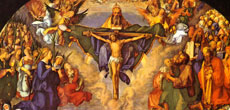
Among the titles given to Mary is "Queen of all the Saints". In one of his reflections on this woman whom he loved with such devotion, Blessed john Paul II proclaimed "This woman of faith... Read More
Mary as Disciple
Mary as Disciple
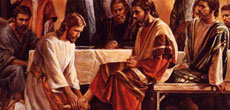
We were made to give ourselves away to the Lord and, in Him, for others. Mary's choice, her response to the invitation of a God, is a singularly extraordinary event in all of human history. Read More
Handmaiden of the Lord
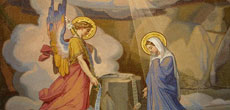
"I am the handmaiden (servant) of the Lord; let it be to me according to your Word." (Luke 1:38) When Mary spoke those few words, human history was forever changed. Read More
Model of Holiness

From antiquity the early Christians reflected on a "mystery" of the faith- how the Incarnation of Jesus Christ came about through the free cooperation of this little Virgin of Nazareth... Read More
First Disciple
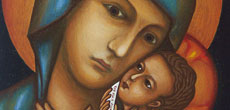
She was the first evangelizer and the first disciple of her Son Jesus. She gave the first Gospel testimony to her cousin, Elizabeth, without words, as the Redeemer in her womb drew the child in her womb... Read More
Way of Mary
The Message of Mary
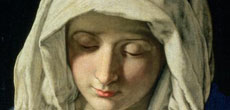
And Mary said, "Behold, I am the servant of the Lord; let it be to me according to your word." And the angel departed from her. (The Gospel of Luke 2:34-37) Read More
The Meaning of Mary

"Behold, I am the handmaid of the Lord; let it be [done] to me according to your word." "At the announcement that she would give birth to "the Son of the Most High" without... Read More
The Prayer of Mary
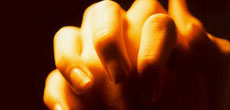
Mary's Prayer teaches us to stay afloat in the ocean of life, with all of its undertows. Mary's way is to become an ark within, where the same God who became incarnate within her... Read More
The Song of Mary

"When Elizabeth heard Mary's greeting, the infant leaped in her womb, and Elizabeth, filled with the Holy Spirit, cried out in a loud voice and said, "Most blessed are you... Read More
The Titles of Mary
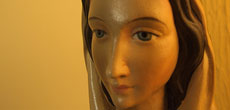
From the earliest theological reflections in Christian history we find the defense of the most important of the titles of Mary, "Theotokos" in Greek. It is translated God-bearer... Read More
Mission of Mary
Mary and the Eucharist
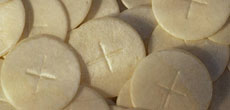
In a beautiful apostolic exhortation entitled the Sacrament of Love, issued in 1997, Pope Benedict XVI wrote these words under a section entitled The Eucharist and the Virgin Mary... Read More
Mary & the New Evangelization
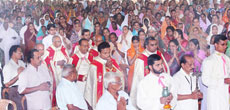
Throughout his pontificate, Blessed John Paul II called for this "New Evangelization." Pope Benedict XVI made this a central pillar of his pontificate. He erected a Pontifical Council... Read More
The Path of Mary
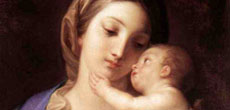
Before they were called Christians (Acts 11:26), at Antioch, they were referred to as "the Way". A Rabbi named Saul spoke of persecuting "the way" (Acts 22:4) before he was profoundly converted... Read More
The Marian Moment

Over the last two decades a recovery of the significance of the life and witness of Mary has occurred among many Christians, even those who descend from the communities of... Read More
Mary's Mission
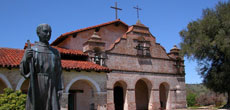
"Standing by the cross of Jesus were his mother... When Jesus saw his mother and the disciple there whom he loved, he said to his mother, Woman, behold, your son." Read More
Marian Prayer and Piety
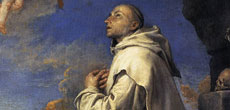
Marian prayer and piety developed very early in the history of the undivided Christian Church of the first millennium. It has been kept alive in a myriad of piety practices in the both the Catholic... Read More
Message of Mary
What Does She Say?

The message of Mary is the message of the Gospel, to repent and believe the Good news. The message of Mary is conversion to Her Son by saying "yes" to God's invitation. That is the path to true... Read More
Marian Prayer and Devotion

The Catechism of the Catholic Church instructs the faithful on just how Mary prayed. Mary still prays. She has a special role in the plan of salvation and is a model for all Christians... Read More
Marian Consecration
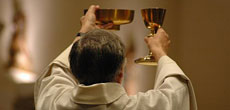
To consecrate means to dedicate. It is used in reference to worship and means to be set aside or set apart for God. It is also a word which speaks to the very core of the Christian... Read More
Devotion of Mary
Sorrowful Mysteries of the Rosary
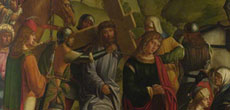
When they came to the place called the Skull, there they crucified him, along with the criminals - one on his right, the other on his left. Jesus said, "Father, forgive them... Read More
Joyful Mysteries of the Rosary
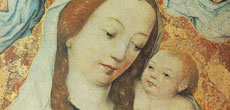
My soul magnifies the Lord, And my spirit rejoices in God my Savior; Because he has regarded the lowliness of his handmaid; For behold, henceforth all generations shall call me blessed... Read More
Glorious Mysteries of the Rosary
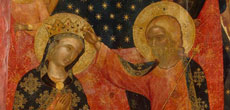
But at daybreak on the first day of the week they took the spices they had prepared and went to the tomb. They found the stone rolled away from the tomb; but when they entered... Read More
Luminous Mysteries of the Rosary
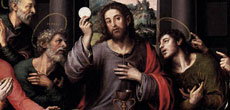
While he was praying his face changed in appearance and his clothing became dazzling white. And behold, two men were conversing with him, Moses and Elijah, who appeared in glory... Read More
Join the Movement
When you sign up below, you don't just join an email list - you're joining an entire movement for Free world class Catholic education.
- Easter / Lent
- Ascension Day
- 7 Morning Prayers
- Mysteries of the Rosary
- Litany of the Bl. Virgin Mary
- Popular Saints
- Popular Prayers
- Female Saints
- Saint Feast Days by Month
- Stations of the Cross
- St. Francis of Assisi
- St. Michael the Archangel
- The Apostles' Creed
- Unfailing Prayer to St. Anthony
- Pray the Rosary
![]()
Copyright 2025 Catholic Online. All materials contained on this site, whether written, audible or visual are the exclusive property of Catholic Online and are protected under U.S. and International copyright laws, © Copyright 2025 Catholic Online. Any unauthorized use, without prior written consent of Catholic Online is strictly forbidden and prohibited.
Catholic Online is a Project of Your Catholic Voice Foundation, a Not-for-Profit Corporation. Your Catholic Voice Foundation has been granted a recognition of tax exemption under Section 501(c)(3) of the Internal Revenue Code. Federal Tax Identification Number: 81-0596847. Your gift is tax-deductible as allowed by law.














